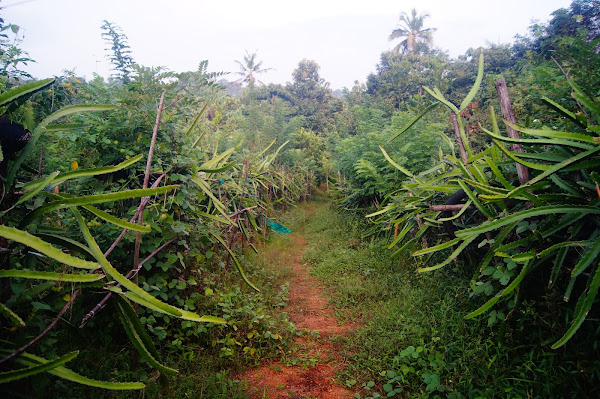Mini guide on Sugar Cane cultivation
 |
| Real time images from our forest-farm |
Sugar cane (Saccharum officinarum) is a tall, perennial grass native to tropical regions. It requires warm temperatures, ample sunlight, and plenty of water to grow successfully. At our forest farm, we have optimized our environment to cater to these needs, ensuring healthy sugar cane plants.
Panting Sugar Cane
Choosing the Variety
- Select a variety that suits your climate and soil conditions. Some popular varieties include 'POJ 2878' and 'Co 740'.
Soil Preparation
- Sugar cane thrives in well-drained, fertile soil with a pH between 6.0 and 7.5. Prepare the soil by removing weeds and adding organic compost to enrich it.
Planting Cuttings
- Use healthy, mature cane stalks as planting material. Cut the stalks into sections with at least two to three buds each. Plant these cuttings horizontally in trenches about 4-6 inches deep and cover them with soil.
Watering
- Sugar cane requires consistent moisture. Ensure the soil remains moist but not waterlogged. During dry spells, provide supplemental irrigation.
Fertilization
- Apply a balanced fertilizer during the growing season to promote vigorous growth. Organic options like compost or well-rotted manure are ideal.
Weed Control
- Keep the planting area free of weeds, especially in the early stages of growth. Mulching can help suppress weed growth and retain soil moisture.
Pest and Disease Management
- Regularly inspect plants for pests like aphids, borers, and scale insects. Natural predators and organic treatments can help manage these pests. Disease control involves using disease-free planting material and maintaining good air circulation around the plants.
Harvesting
- Sugar cane is typically ready for harvest 12-18 months after planting. Look for mature stalks that are firm and have a yellowish hue. Cut the stalks close to the ground using a sharp knife or machete.
At Liz Pepper Gardens, we believe in sustainable farming practices that benefit both the environment and our community. Here are some methods we use in our sugar cane cultivation:
1. Intercropping:
- We plant sugar cane alongside other crops like legumes and vegetables when they are rooted well and can thrive on their own. This not only maximizes land use but also improves soil fertility through nitrogen fixation. This is optional, for instance you can very well cultivate them even in large grow bags like in the pictures given.
2. Organic Farming:
- We use organic fertilizers and pest control methods to reduce chemical inputs and promote a healthy ecosystem.
3. Water Conservation:
- Implementing efficient irrigation systems like drip irrigation helps conserve water while ensuring our plants receive the moisture they need.
Benefits of Sugar Cane
Sugar cane is more than just a sweet treat. Here are some benefits of growing this versatile plant:
Soil Health:
- Sugar cane roots help prevent soil erosion and improve soil structure.
Renewable Resource:
- As a perennial grass, sugar cane can be harvested multiple times from the same plant, making it a renewable resource.
Economic Value:
- Sugar cane has various uses, from producing sugar and molasses to creating biofuels and paper products, making it a valuable crop for small farmers.
Start Small and Observe
For those new to sugar cane farming, we encourage you to start with just one plant. Take the time to observe its needs, growth patterns, and responses to care. This hands-on experience will be invaluable and might even make extensive guides like this one unnecessary. By closely monitoring your plant, you'll develop a deeper understanding and become more confident in your gardening skills.
For more updates and tips from our farm, follow our blog and stay connected with us on WhatsApp and Instagram. Let's grow together!



🙏
ReplyDelete